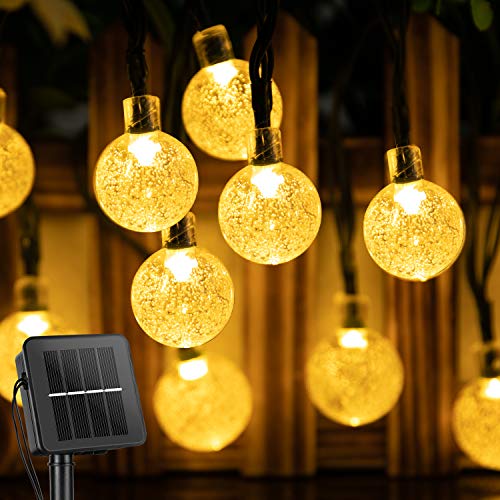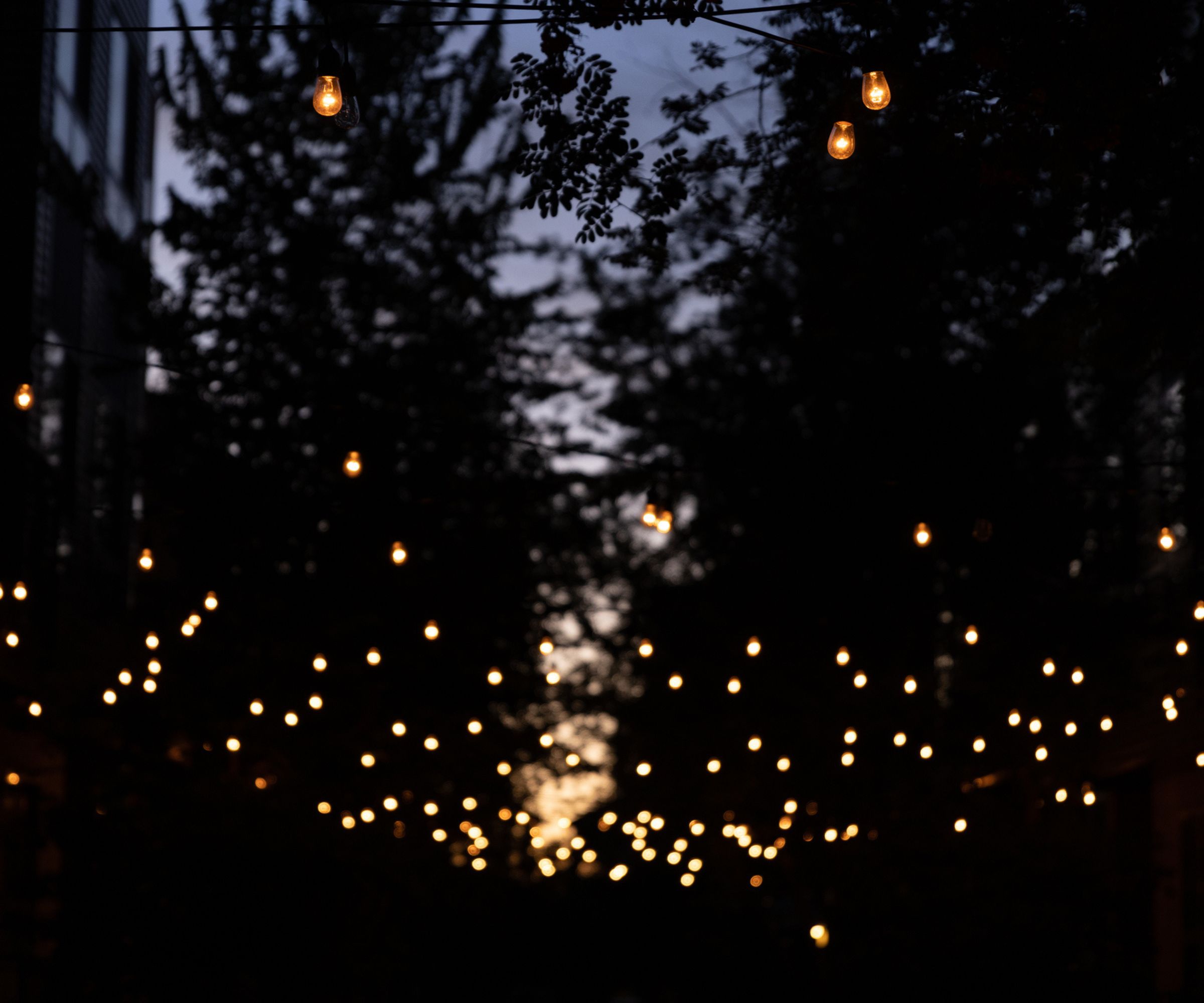How to make solar lights work in winter – 4 simple tips from electrical experts
It can sometimes be tricky to make solar lights work in winter, but these simple methods will make sure they shine even without the sun


Solar lights are one of the best ways to light your garden. Unlike many landscape lights, they're cheap, easy to install, and totally free to run.
However, solar lights are, of course, dependent on the weather, so as we head into fall and get ready for winter, you may find your lights switching on later, running for a shorter time, and looking dimmer than usual. For aesthetic solar lights, these issues are less of a problem. However, dim or broken solar lights can cause issues if you use your solar lights for security.
To help your solar outdoor lighting ideas run their best with minimal sun, I spoke to a solar expert and an electrician for their top tips and tricks for running solar lights in the fall and winter.
1. Change the angle of your solar panel

One of the easiest ways to improve the performance of your solar lights is to tilt the solar panel. In summer, it's best to keep your solar lights relatively flat, on a tilt between 5 and 10 degrees. That's because the sun is high and overhead for most of the day. That isn't the case in autumn and winter, however.
Solar expert Andrei Marveaux told me that 'during winter, the sun is lower in the sky, and you can easily make massive improvements to the performance of your solar lights by simply adjusting the angle to capture more direct sun.' It's easy to do; Andrei says 'Just tip the angle of the panels so they are more directly into the sun, trying for an angle that hits maximum exposure with the shorter days.' In winter, you'll see much better results if your panel is tipped between 45° and 60°.
It's quite simple physics. Electrician Bobby Lynn told me that 'With the sun sitting lower in the sky during these months, tilting your panels directly towards it can really improve their sunlight capture.' It's especially important the farther north you are. 'This step is important in areas with shorter daylight hours as it helps the batteries charge better, making sure your lights stay bright.'
If you want to be really precise, a quick Google will show you solar panel calculators. Just plug in your rough location and it will give you the optimum angle for your solar panel for every month of the year. We look at where to place solar lights in our dedicated feature.
Design expertise in your inbox – from inspiring decorating ideas and beautiful celebrity homes to practical gardening advice and shopping round-ups.

These are the best solar lights I've ever tested. I tried them years ago and they're still going strong after several seasons of snow, rain, and dust storms. I've even outright tried to break them against fence panels and they've still held up. The only issue is that they're sold under lots of different names, so it can be hard to find a genuine set.
Andrei is Managing Director at SolarTech Solutions. Andrei has a degree in Engineering and has over seven years of experience in the solar industry.

Bobby is the owner and operator of Live Wire Electrical, an electrician service in Charlotte, NC. Bobby has more than 20 years' experience as an electrician.
2. Apply waterproof sealant

Most solar lights are already weatherproof. If your lights are rated IP65 and above, they should be able to stand up to rain and snow. However, you can take an extra step to improve their weatherproofing.
All you need is clear weatherproof silicone gel like this from Lowe's. Electrician Bobby Lynn says 'Even though most solar lights are built to handle the weather, adding a layer of clear waterproof sealant to the joints and seams can stop moisture from getting in.'
Solar expert Andrei MArveux agrees, and adds 'Applying a layer of clear waterproof sealant around the edges could just help in keeping moisture from finding its way into the lights. Be sure to seal any exposed wiring or connections properly as well.'
3. Use li-on batteries

All solar lights use rechargeable batteries, and one of the drawbacks of these batteries is that they don't work as well in the cold. The colder the temperature, the greater the battery's internal resistance, which means the battery holds less charge and takes longer to build up even this lower charge. If you've ever had a bright, sunny day in winter and thought your lights would stay on all night, only to be surprised when nothing happens, it's because the batteries are working against the cold. We look why aren't my solar lights working in our separate feature.
Unfortunately, this affects all batteries, but one type is better than others. If your solar lights aren't working as well in the cold, consider swapping them out for lithium-ion (li-on) batteries.
Solar expert Andrei Marvauex told me 'Lithium-ion batteries are used because they perform better in cold weather compared to normal rechargeable batteries.' If your lights are nickel-metal hydride (NiMH), try lithium batteries. You can find affordable rechargeable lithium batteries on Amazon.
4. Clean the solar panel

The final step you can take is to keep your solar panel clean. It's easy to assume that water on the solar panel won't affect it, as water is transparent. However, drops of water refract light, so not all of that sunlight will make its way to the solar panel. Snow is even worse because it reflects light.
Solar expert Andrei Marveaux says 'Snow, ice, and other debris can block sunlight. Keeping them clean will guarantee the panels absorb as many rays of light as possible.' It's not always practical, but your solar lights will be more efficient if you wipe the panel dry when the sun is out.
FAQs
Do solar lights work when it's cloudy?
Solar panels are less effective when it's cloudy, but they still work. A bigger factor in winter is that the days are shorter, so there's less sun in total, regardless of if it's cloudy or not. Either way, solar panels will work when it's cloudy, and so should your solar lights.
If you don't already do this, another tip to make your solar lights more efficient is to turn them south. In the northern hemisphere, it's always best to place solar lights to the south, as the sun is always on the southern half of the sky.
If you're looking to purchase solar lights for your outdoor lighting ideas, we explore how to buy good solar lights in our dedicated guide.

As a gardens and lifestyle contributor, Alex makes sure readers find the right information to help them make the best purchase. Alex got his start in reviewing at the iconic Good Housekeeping Institute, testing a wide range of household products and appliances. He then moved to BBC Gardeners’ World Magazine, assessing gardening tools, machinery, and wildlife products.




